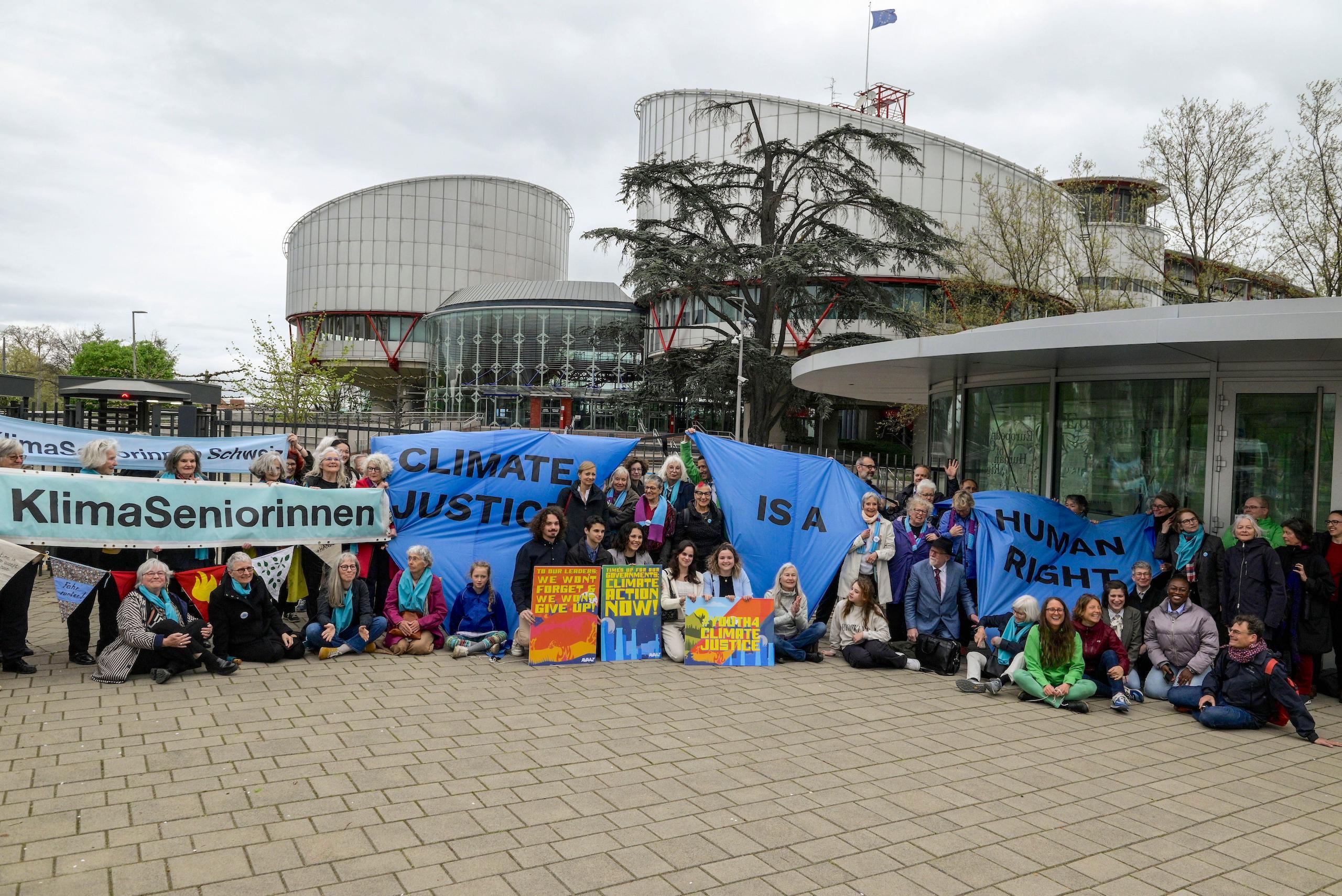Between June 2023 and May 2024, every month was its hottest on record globally. It is in this context that more civil-society actors are raising questions about their governments’ inadequate measures to combat climate change. Climate litigation has become a mechanism to compel governments to enact stronger climate action and to uphold existing environmental legislation. It has also pushed enterprises to respect the rule of law and comply with environmental regulations.
Compared to a strong climate movement globally and a robust mechanism of climate lawsuits across jurisdictions, China’s climate litigation is still in its nascent stage. Nonetheless, it has the potential to help the world’s top emitter achieve its dual carbon goals – of peaking emissions before 2030 and reaching carbon neutrality before 2060. It can also help China adapt to the impacts of climate change by increasing local-government transparency in upholding central directives.
Landmark cases shape global legal landscape
In April, the European Court of Human Rights made a landmark decision. It ruled in favour of environmental activists, finding the Swiss government responsible for inadequate efforts to reduce carbon emissions that might threaten the health and lives of vulnerable populations during heatwaves. The ruling might strengthen the role national courts play in global climate litigation and fuel the rise of lawsuits against governments’ failure to comply with climate targets. Similar cases have indeed been addressed at the national level, such as when a Dutch environmental group successfully obliged its government to reduce the country’s greenhouse-gas emissions by 25% by 2020 through a supreme court ruling in 2019.
Globally, the number of climate-litigation cases almost tripled between 2017 (884 cases) and 2023 (2,540), according to the Sabin Center‘s US and global databases. This demonstrates the increasing importance of climate law in international and domestic legislation. China’s low number of climate-litigation cases, accounting for just two recorded cases, may be due to insufficient climate policies. Its dual-carbon targets, for example, are not enshrined in law. It may also be due to rulings lacking a substantive reference to climate change, per the Sabin Center definition of climate-change litigation. Overall, around 400,000 environmental public-litigation cases were filed in China between 2018 and 2022. Of these, 87% were administrative and the rest were civil. Some courts also rule in commercial and criminal cases regarding environmental harm. However, many of them only incidentally mention climate mitigation and adaptation and are never considered in court.
In climate science, climate mitigation means reducing or absorbing greenhouse gas emissions to curb global warming, such as by prioritising clean-energy generation. Adaptation means taking action to reduce the harmful impacts of global warming, such as by building sea walls to cope with rising sea levels.
The stark disparity between recorded cases in China and the Global North underscores the urgent need for Chinese courts to enhance their climate-litigation procedure, helping to translate climate action for the low-carbon transition more explicitly into the domestic agenda.
China’s unique position in climate litigation
Several factors distinguish China from the global climate-litigation trend. First, climate cases are mostly concentrated in the Global North, with leading numbers from the US (around 70% of the total), Australia and Europe. In the groundbreaking Held v State case filed in 2020, 16 young environmental activists sued the US state of Montana for violating their constitutional right to a clean and healthful environment, and won. In August 2023, Judge Seeley ruled that regulators must evaluate the effects of greenhouse gas emissions before issuing fossil-fuel permits. The lawsuit is notable for its proactive approach to holding government agencies accountable for not only current but also future generations and ecosystems.
Unlike preventative and outward-looking litigation in the Global North, climate litigants in developing countries operate on limited regulatory instruments to combat environmental degradation and negligence of governmental policies at more local levels. Global South climate litigation, including China’s, is steadily growing. This is being driven by global trends, the expansion of environmental legislation, the strengthening of domestic environmental institutions and rising vulnerability to increasingly adverse climates. Despite the significant improvement in recent years, however, Asian courts have the fewest cumulative cases after Africa and the Caribbean.
Furthermore, unlike overseas climate litigators targeting various entities, including governments, enterprises, and municipalities, China’s courts focus on upholding government policies among corporations and local authorities. Ruling a case against the central government for inadequate climate measures would be impossible in most Global South countries, including in China, where environmental and decarbonising policies take the place of a comprehensive climate-change law. Therefore, a different approach that involves the proactive role of state agencies and transparency among all domestic actors could prove more effective for China. Climate litigation can serve as the mechanism for gaining official support in the climate agenda across industries and jurisdictions, galvanising existing regulatory systems to promote climate mitigation.
Legal transformation in China empowers climate litigators
China’s environmental legal system has been gradually transforming over the past decade. This was triggered by unprecedented levels of air pollution from 2008-2014, which caused respiratory diseases and even impacted traffic safety. When public awareness reached a tipping point, the government was prompted to allow public-interest lawsuits filed by NGOs against polluters.
The opportunities for public environmental litigation further expanded in 2018. China’s “ecological civilisation” concept was officially proclaimed in the constitution, and a set of 10 typical public-interest litigations was released by the supreme procuratorate.
In 2020, the supreme court issued an initial classification of climate cases. The following year, China for the first time included decarbonisation targets in its five-year economic plan, the most influential tool for nationwide regulations. This inclusion acknowledged the significance of climate and sustainability goals within a national economic model. Last year, the supreme procuratorate released of a set of carbon-peaking and carbon-neutrality cases, and the supreme court issued guidance on climate governance and the promotion of the dual-carbon goals. These various developments have empowered prosecutors to file claims recognising global standards in climate litigation.
This legal improvement signals the central government’s dedication to fulfilling its dual-carbon pledge by empowering climate litigators, though challenges persist in public-interest litigation brought by environmental NGOs.
The role of environmental NGOs in climate litigation
Only a small proportion of China’s registered civil-society organisations focuses on the environment. Much fewer initiate climate-litigation cases, with most deterred by restrictive regulations and the burden of legal fees. Despite the 2015 law allowing environmental NGOs to initiate public-interest climate litigations, few in China are willing to take this risk. Among the most prominent that do are the state-backed China Biodiversity Conservation and Green Development Foundation, and Friends of Nature, an NGO. The latter recently won a case against Gansu State Grid, forcing the state-owned enterprise to invest in and transition to renewable energy. But environmental NGOs’ general reluctance demonstrates the limitations of China’s climate-litigation field. Most cases are resolved in the legal warning stage, when prosecutors send a notice before filing the case to the court. This allows time and space for corrective action from defendants and requires less funds from plaintiffs.
Additionally, if climate litigations are backed by efficient tracking of pollution data, China’s climate-litigation system might create a precedent globally. In fact, this opportunity already exists thanks to the Blue Map platform. Blue Map was launched by non-profit research organisation the Institute of Public & Environmental Affairs (IPE). It provides real-time environmental and climate-compliance data and can facilitate lawsuits against polluters.
Financial help, central-government support and streamlined regulations could unlock the true potential of climate litigation as a powerful oversight and transparency tool, with NGOs playing a more proactive role on a local level.
Lessons from other Asian countries might strengthen China’s climate litigation
China also has other priorities of course. One of the biggest potential stumbling blocks for achieving the dual-carbon goals is the prioritisation of economic development over strict environmental-law enforcement. Other Asian countries that are balancing economic development with enhancements to their climate-litigation framework might offer valuable insights for China. Although the legal systems may differ drastically, transboundary lessons should strengthen climate jurisdiction and existing environmental courts in China.
Indonesian litigators file more climate lawsuits than those of any other Asian nation. Like China, Indonesia does not have an explicit climate-change law. Instead, it focuses on governmental support and political will. Thus, its environment and forestry ministry has acted as a plaintiff in a number of cases against polluting and damaging industries and companies. Similarly, China’s ecology and environment ministry could use its reports to emphasise the role environmental courts and climate litigation can play, and provide advisory support.
India, despite setting a net-zero target for 2070 (10 years later than China’s), also presents a valuable case study. It has a specialised body, the National Green Tribunal, for dealing with environmental cases. It provides both judicial and technical expertise, which minimises the auditing burden. For instance, in the hearing on the Vizhinjam International Seaport, the body appointed an expert committee to assess the environmental impact of the port’s construction on coastal erosion.
Last month, India’s supreme court recognised the constitutional right to be free from climate-change impacts. India is the world’s third-largest emitter of carbon and this ruling will empower its climate-litigation field.
Both the Indonesia and India examples could benefit China’s litigation framework, ultimately narrowing the implementation gap in China’s net-zero commitments.
Navigating China’s transition to a low-carbon economy
By enhancing environmental law and climate litigation, strengthening the framework for civil-society participation, and following regional developments, China won’t miraculously achieve carbon neutrality while sustaining its economic growth rate. However, the global climate-litigation trend sets a vital example for China to ensure compliance with environmental policies and national directives at the local level. Using more litigation to drive climate compliance additionally supports the transition to a low-carbon economy. The guidance promoted by the supreme procuratorate and supreme court should be translated into national legislation, enforcing China’s ecological and environmental regulations.
Even with persistent challenges, revised climate litigation in China can create a precedent for developing economies and reinforce its role in driving the Global South’s low-carbon efforts.









